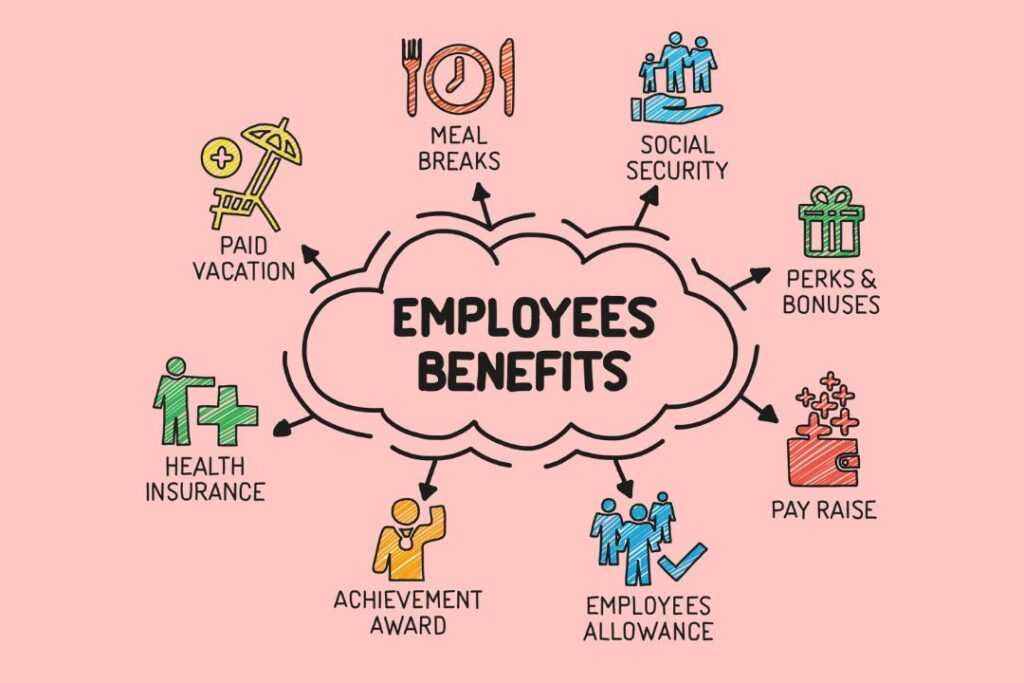In today’s highly competitive job market, offering a comprehensive Employee Benefits Program can be a critical factor in attracting and retaining top talent. Employee benefits have become an essential part of compensation packages, and businesses that offer comprehensive benefits programs have a significant advantage over those that do not. In this blog post, we’ll explore the importance of Employee Benefits Programs, the different types of benefits that can be offered, and how businesses can create effective programs to meet the needs of their employees.
Contents
What Is Employee Benefits Program?
An Employee Benefits Program refers to a package of non-wage compensation provided to employees by an employer in addition to their regular salary or wages. The purpose of an EAP is to offer employees a range of benefits that can enhance their overall well-being, increase job satisfaction, and promote loyalty and retention. The specific benefits offered by an Employee Benefits Program can vary depending on the employer, the industry, and the size of the organization.
Advantages Of The Employee Benefits Program

There are several advantages of having an Employee Benefits Program, both for the employer and the employees. Some of the key advantages are:
- Attract and retain top talent: A comprehensive Employee Benefits Program can be a critical factor in attracting and retaining top talent. When employees feel that their employer cares about their well-being and offers them valuable benefits, they are more likely to stay with the company.
- Increase job satisfaction: Offering employees a range of benefits that enhance their overall well-being, such as health and dental insurance, paid time off, and wellness programs, can increase job satisfaction and improve employee morale.
- Boost productivity: When employees feel valued and appreciated, they are more likely to be engaged and motivated at work. This can lead to higher levels of productivity and better overall performance.
- Reduce absenteeism and turnover: By offering benefits such as paid time off and flexible work arrangements, employees are more likely to take care of their health and personal needs, which can reduce absenteeism and turnover.
- Tax advantages: Many Employee Benefits Programs offer tax advantages for both the employer and the employee. For example, contributions to a retirement plan are often tax-deductible, and employees may be able to save money on their taxes by participating in a health savings account.
Overall, an effective Employee Benefits Program can help organizations build a more loyal, engaged, and productive workforce while providing employees with valuable benefits that support their overall well-being.
Examples Of Benefits Program For Employee
There are various benefits programs that employers can offer to their employees to attract, retain and motivate them. Some examples of benefits programs for employees are:
- Health insurance: This is one of the most common benefits offered by employers. It covers the cost of medical treatment for employees and their families.
- Retirement benefits: Employers can offer 401(k) plans or pension plans to help employees save for their retirement.
- Paid time off: This includes paid vacation days, sick leave, and personal days that employees can use to take time off from work.
- Flexible work arrangements: Employers can offer flexible work schedules, telecommuting, and job sharing to help employees achieve a better work-life balance.
- Employee assistance programs (EAPs): These programs provide confidential counseling and support services to employees and their families.
- Childcare assistance: Employers can offer on-site childcare facilities, subsidize childcare costs, or provide referrals to quality childcare providers.
- Wellness programs: These programs encourage employees to adopt healthy habits and behaviors through fitness programs, health screenings, and healthy eating initiatives.
- Education assistance: Employers can provide tuition reimbursement or assistance with continuing education courses to help employees develop their skills and advance their careers.
- Employee discounts: Employers can offer discounts on products and services to employees as an additional perk.
- Commuter benefits: These programs provide subsidies or reimbursements for transportation costs, such as parking fees and public transportation.
These are the common examples of Benefits Programs that are given by employers for the wellness of their employees.
How To Plan An Employee Benefits Program?

Planning an employee benefits program requires a strategic approach to ensure that the program meets the needs of both the employees and the organization. Here are some steps to plan an employee benefits program:
- Assess employee needs: Conduct a survey or focus groups to understand the benefits employees value the most. Identify the gaps in the current benefits package and areas where employees are most interested in receiving additional support.
- Set program objectives: Define the goals of the benefits program, such as improving employee retention, attracting new talent, or improving employee health and wellness.
- Develop a budget: Consider the financial resources available and allocate the budget for the benefits program.
- Research benefits options: Explore different benefits options available in the market, such as health insurance plans, retirement savings plans, and wellness programs.
- Evaluate vendor options: Research and compare vendor options to determine which best aligns with your company culture and budget.
- Communicate the benefits program: Develop a communication plan to announce the new benefits program, educate employees on the available options, and explain how to enroll in the program.
- Monitor and evaluate: Regularly assess the effectiveness of the benefits program and make necessary adjustments to ensure it meets the changing needs of the employees and organization.
- Compliance: Ensure the benefits program meets legal and regulatory compliance requirements, such as those set by the Affordable Care Act or Employee Retirement Income Security Act (ERISA).
Overall, a successful employee benefits program requires collaboration between HR, management, and employees to ensure the program meets the needs of both the employees and the organization.
Conclusion
In conclusion, an employee benefits program is a critical component of a company’s overall compensation package. It not only helps attract and retain top talent but also improves employee morale and productivity. Planning a benefits program requires a strategic approach, including assessing employee needs, setting program objectives, developing a budget, researching benefits options, and evaluating vendor options. By taking a comprehensive approach to plan an EAP, employers can provide valuable support to their employees while also achieving their organizational goals.
Employee wellness programs are the key to improving employee motivation, productivity, and retention. At MantraCare, we have a team of health experts, counselors, and coaches who serve corporate employees with 10+ wellbeing programs including EAP, Employee Diabetes Reversal, Corporate MSK, Employee Fitness, Corporate Yoga, and Employee meditation.
